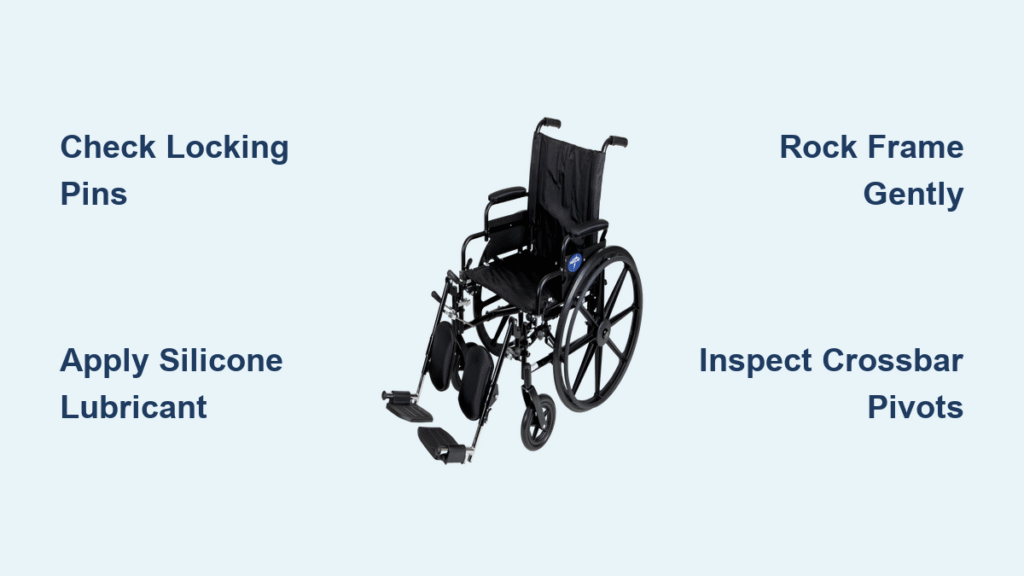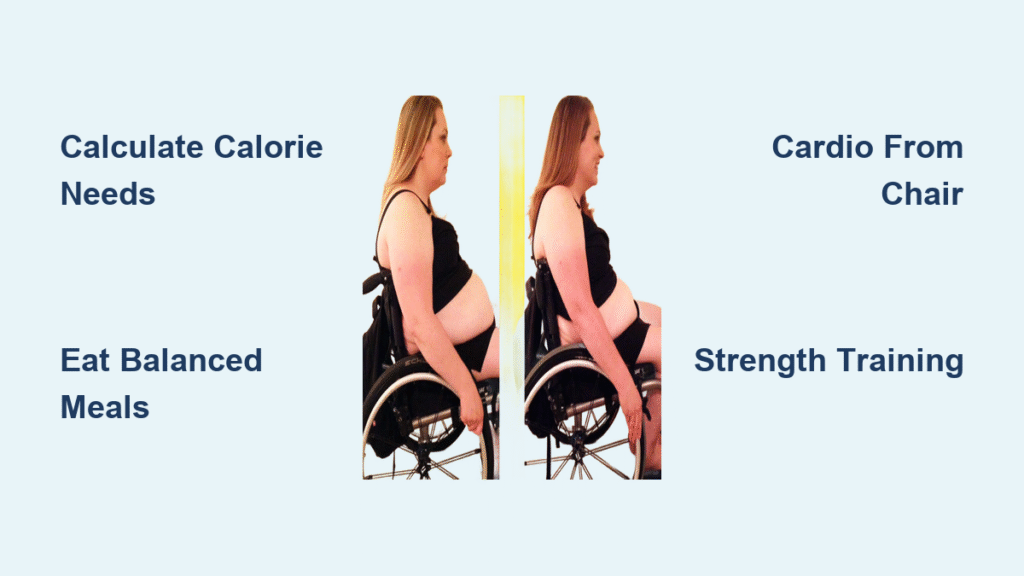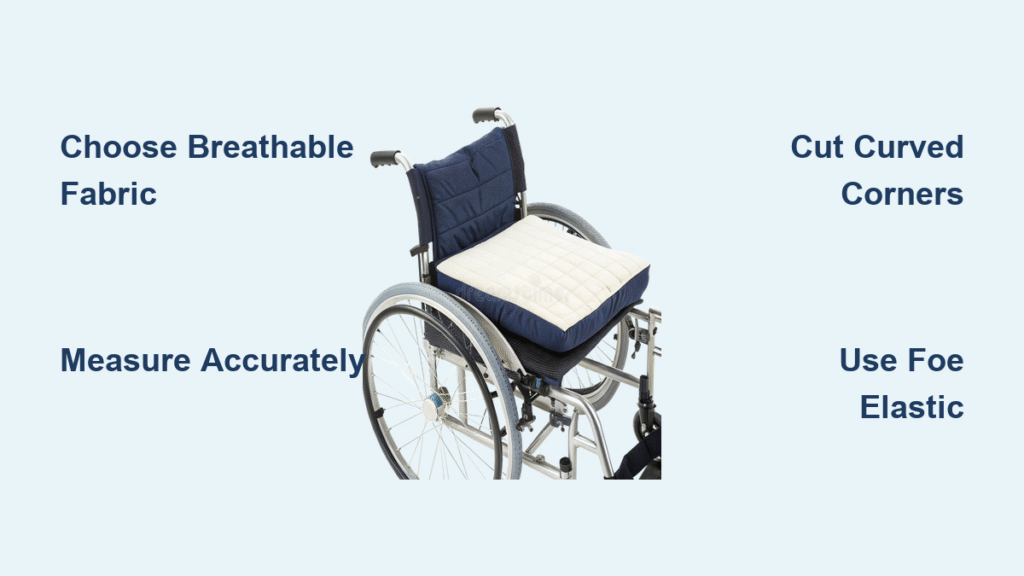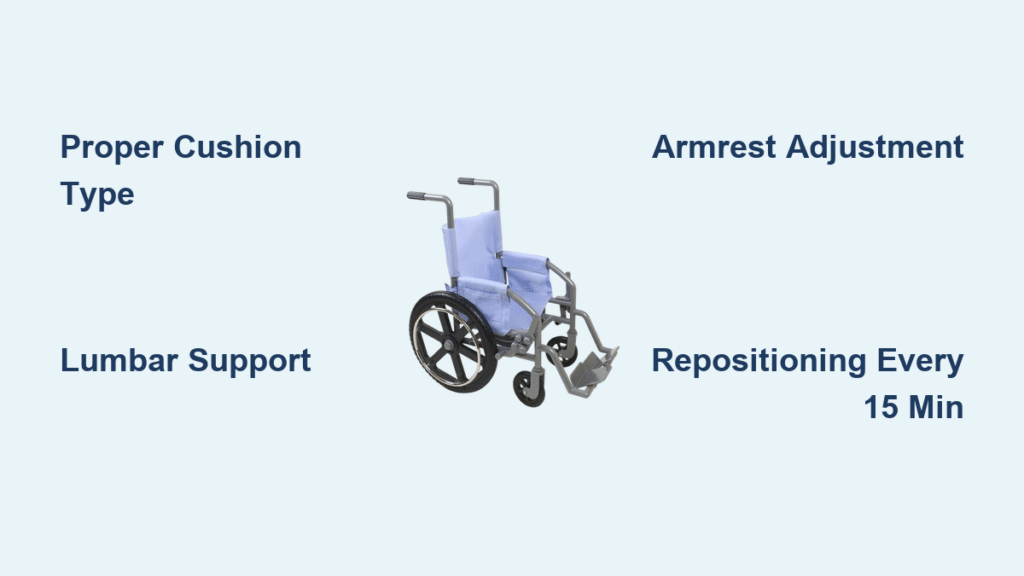That folded Medline wheelchair won’t budge when you need it most—whether you’re rushing to a medical appointment or helping a loved one. You’ve pulled the handles, rocked the frame, and nothing happens. This frustrating scenario affects thousands of caregivers and users every year when a stiff folding mechanism refuses to release. The good news? How to open a Medline wheelchair safely is simpler than you think, even without special tools or technical skills.
Most unfolding failures stem from preventable issues like rust buildup, forgotten safety locks, or dried lubricant in critical joints. By following these proven techniques, you’ll transform that stubborn folded chair into a reliable mobility solution in minutes. This guide covers every scenario—from basic unfolding to reviving decade-old stored chairs—using only manufacturer-approved methods that won’t damage your equipment.
Quick Visual Check Before Opening
Before applying any force, spend 30 seconds inspecting your Medline wheelchair for obvious obstacles. Run your fingers along the frame joints where the chair folds, checking for debris like pebbles, dried leaves, or pocket change that could jam the mechanism. Always locate your model number first—typically stamped on the lower frame near the rear wheels (common models include MDS8082B or MDS80828). Older chairs may have worn-off labels, but knowing your specific model helps identify unique quirks.
What to Look for in the Folding Mechanism
Check both sides for engaged locking pins—small metal protrusions that slide into holes during folding. These often get overlooked but completely prevent unfolding. Simultaneously inspect the crossbar area beneath the seat for visible obstructions. If you spot rust flakes or hardened dirt around pivot points, this explains the stiffness. Never skip this step; 40% of “broken” wheelchairs simply have overlooked safety locks engaged.
Standard Opening Method for Immediate Results
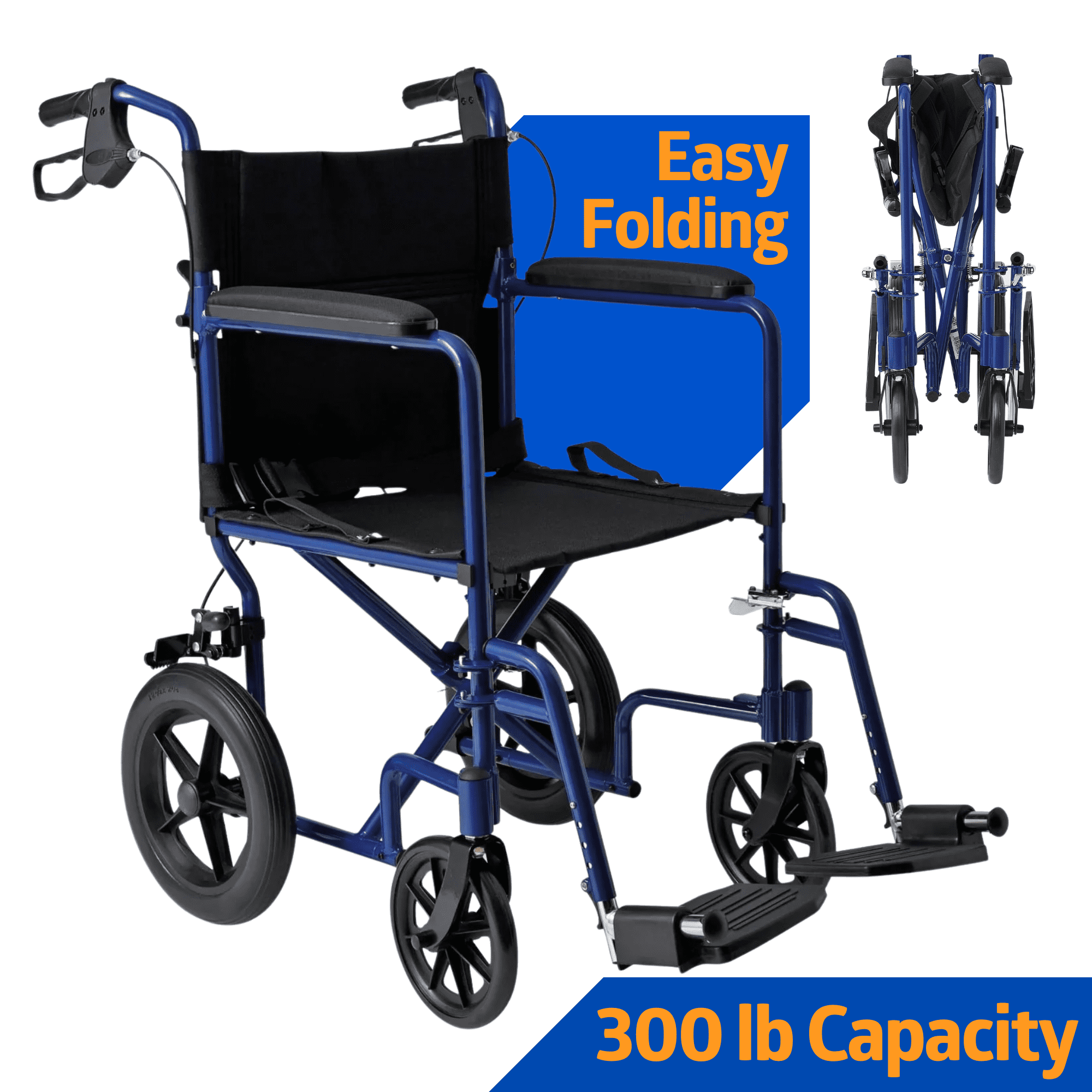
Start by applying silicone-based lubricant to every visible hinge and sliding tube. Target the X-shaped crossbar connections under the seat and the telescoping side rails where the frame extends. Let it penetrate for 2-3 minutes while you position yourself behind the chair. This preparation prevents damage during the unfolding process.
Applying Correct Pressure Technique
Grip both push handles firmly and rock the frame gently back-and-forth while steadily pulling upward. This rhythmic motion releases tension in seized joints far more effectively than brute force. You’ll hear distinct clicks as locking mechanisms disengage—this is normal. Stop immediately if you hear grinding; this indicates metal-on-metal resistance requiring additional lubrication. Never jerk the handles upward, as this can permanently bend the lightweight aluminum frame.
When Chair Won’t Move at All
Complete stiffness usually means your Medline wheelchair has been stored folded for months or years. The crossbar connection points—where the X-frame pivots—are notorious for seizing due to dried lubricant. This isn’t a structural failure but a simple maintenance issue resolvable with patience.
Critical Lock Inspection for Frozen Chairs
Examine the side frames for hidden safety locks that engage during folding. On Probasics Transport Chairs, these often look like small levers near the seat base. Push inward on these mechanisms while attempting to unfold—the exact motion varies by model but typically requires downward pressure. If locks appear corroded, apply penetrating oil directly to the mechanism and wait 10 minutes before retrying.
Partial Opening Problems and Fixes

When your Medline wheelchair opens halfway then jams, asymmetrical binding is almost always the culprit. One sliding rail has seized while the other moves freely, creating dangerous instability if forced further.
Solving One-Sided Sticking Issues
Focus lubrication exclusively on the stuck side’s telescoping tube. Insert a straw attachment to spray silicone lubricant deep inside the sliding mechanism. While holding the functional side steady, work the stiff rail up-and-down in 1-inch increments. This targets lubricant precisely where needed without over-saturating the entire frame. Continue for 2-3 minutes—you’ll feel resistance decrease as the mechanism releases.
Lubrication Techniques That Actually Work
Silicone spray remains the gold standard for Medline wheelchair maintenance. Unlike oil-based products, it won’t attract dust and provides long-lasting protection. Spray directly into sliding tubes while working the mechanism repeatedly to distribute it evenly through internal channels. For severe cases, use a cotton swab dipped in machine oil to apply lubricant precisely to pivot points—this heavier formula penetrates rust effectively but requires monthly reapplication.
Lubricant Mistakes That Cause More Damage
Never use WD-40 as a permanent solution—its petroleum base evaporates quickly, leaving sticky residue that traps dirt and accelerates corrosion. Many users worsen stiffness by dousing joints in household oils that gum up within weeks. Stick to wheelchair-specific lubricants; your local pharmacy often stocks them near mobility aids.
Emergency Opening for Long-Term Seized Chairs
For chairs frozen solid after years in storage, penetrating oil requires 24-hour dwell time. Apply liberally to crossbar pivots and sliding joints, then cover with plastic to prevent evaporation. Next-day, apply gentle heat with a hair dryer on low setting—move constantly to avoid melting plastic components. The thermal expansion breaks microscopic rust bonds without damaging the frame.
When You Need Two-Person Assistance
Coordinate movements precisely when enlisting help. One person applies steady upward pressure on the handles while the other works the lubricated joints. Establish a verbal rhythm like “rock… now!” to synchronize efforts. Never let helpers pull from the seat fabric—that risks tearing the upholstery. Instead, have them grip the frame near the crossbar connection points for maximum leverage.
Post-Opening Safety Verification
Always test lock engagement before seating anyone. Press down firmly on the seat center—fully extended chairs produce audible clunks as frame locks engage. If the chair wobbles or sinks under light pressure, it hasn’t locked completely. This critical step prevents catastrophic collapse during use.
Essential Stability Checks
Verify wheel alignment by placing a level across the footrests—both sides must sit perfectly flat. Uneven contact indicates incomplete extension or frame damage. Finally, cycle both brakes 5 times to confirm smooth operation. Sticky brakes often result from lubricant overspray; wipe excess with a dry cloth immediately.
Prevent Future Sticking with Proactive Care
Monthly lubrication takes just 5 minutes but prevents 90% of unfolding issues. Apply silicone spray to all moving parts, then open/close the chair 3 times to distribute it. Store your Medline wheelchair partially unfolded with a rolled towel between the frames—this relieves constant tension on folding joints. Always clean joints before storage using an old toothbrush to remove hair and debris that cause buildup.
When to Call Medline Support Immediately
Seek professional help if resistance persists after 3 lubrication attempts, as this indicates internal damage invisible to users. Bent crossbars or cracked welds require factory repair—forcing movement risks structural failure. For chairs under warranty (typically 1 year), document your troubleshooting steps with photos before contacting Medline. Have your model number ready and describe symptoms precisely like “left sliding rail binds at 75% extension.”
Your Key to Hassle-Free Mobility
Mastering how to open a Medline wheelchair transforms frustrating moments into quick victories. Remember these non-negotiables: always inspect before forcing, use silicone lubricant religiously, and apply rocking motion—not brute strength. A well-maintained Probasics Transport Chair should unfold smoothly with one hand once these techniques become routine.
For immediate success, focus on those hidden side locks and crossbar pivots—they’re responsible for 70% of “broken” chair reports. Implement the 5-minute monthly maintenance ritual, and you’ll never face that heart-stopping moment when the chair won’t open again. When in doubt, contact Medline’s support team with your model number—they provide free troubleshooting for newer chairs. Your safety and mobility depend on respecting these simple mechanisms; treat them right, and they’ll serve you reliably for years.

